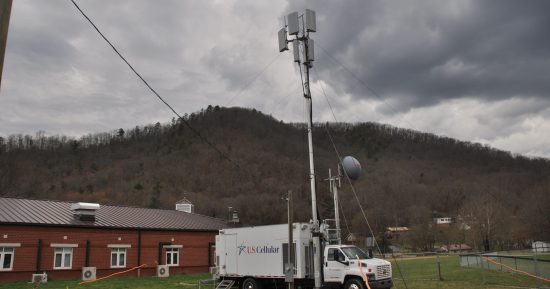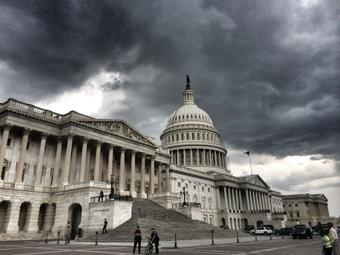Section 230 is in trouble. Both presidential candidates have made its elimination a priority. In January, Joe Biden told the New York Times that the liability protections for social media companies should be revoked “immediately.” This week, President Trump called for revoking Section 230 as well. Most notably, after a few years of threatening action, the President issued an Executive Order about Section 230, its liability protections, and free speech online. (My article with Jennifer Huddleston about Section 230, its free speech benefits, and the common law precedents for Section 230 was published in the Oklahoma Law Review earlier this year.)
There have been thousands of reactions to and news stories about the Executive Order and a lot of hyperbole. No, the Order doesn’t eliminate tech companies’ Section 230 protection and make it easier for conservatives to sue. No, the Order isn’t “plainly illegal.”
It’s fairly modest in reach actually. The Executive Order can’t change the deregulatory posture and specific protections of Section 230 but the President has broad authority to interpret the unclear meanings of statutes. Some of the thoughtful responses that stuck out are from Adam Thierer, Jennifer Huddleston, Patrick Hedger, and Adam White. I won’t reiterate what they’ve said but will focus on what the Order does and what the FCC can do.
Election Year Jawboning
The Order is a political document. For the baseball fans, it’s the political equivalent of a brushback pitch to tech companies–the pitcher throws an inside fastball intended to scare the batter without hitting him. (Enjoy 4 minutes of brushback pitches on YouTube.) Most of the time, a pitcher won’t get ejected by the umpire for throwing a brushback pitch. Likewise, here, I don’t see much chance of the Order being struck down by judges. The Order was wordsmithed, even in the last 24 hours before release, in a way to avoid legal troubles.
As Jesse Blumenthal points out in Slate, the Order is just the latest example of the long tradition of politicians using informal means and publicity to pressure media outlets. The political threats to TV and radio broadcasters during the Nixon, LBJ, and Kennedy years were extreme examples and are pretty well-documented.
More recently, there was a huge amount of jawboning of media companies in the runup to the 2004 election. Newspaper condemnation and legal threats forced a documentary critical of John Kerry off the air nationwide. Stations either pulled the documentary or only ran a few minutes of it because activists’ threatened to challenge TV station licenses for years at the FCC if stations ran the documentary. Many people remember the Citizens United case, which derived from the FEC’s censorship of an anti-John Kerry documentary in 2004 and an anti-Hillary Clinton documentary in 2008. Less remembered is that the conservative group started creating political documentaries only after the FEC rejected its complaint to get a Michael Moore’s anti-Bush documentary, Fahrenheit 9/11, off the air before the 2004 election.
The Title II net neutrality regulations were, per advocates close to the Obama White House, imposed largely to rally the base after Democrats’ 2014 midterm losses.
Implementation of the Executive Order
The timing of the Order–a few months before the election–seems intended to accomplish two things:
- Rally the Trump base by publicly threatening tech companies’ liability protections and provoking tech companies’ ire.
- Focus public and media scrutiny on tech companies so they think twice before suspending, demonetizing, or banning conservatives online.
The legal effect in the short term is negligible. Unless the relevant agencies (DOJ, FTC, NTIA, FCC) patched something together hastily, the Order won’t have an effect on tech companies and their susceptibility to lawsuits in the near term. The most immediate practical effect of the Order is the instructions to the NTIA. The agency is directed to petition the FCC to clarify what some unclear provisions of Sec. 230 mean, particularly the “good faith” requirement and how (c)(2) in the statute interacts with (c)(1).
It’s not clear why the Order makes this roundabout instruction to the NTIA and FCC. (The FCC is an independent agency and can refuse instructions from the White House.) “Good faith” is a term of art in contract law. It seems to me that referring this to the DOJ’s Office of Legal Counsel, not the FCC, would be the natural place for an administration to turn to to interpret legal terms of art and how provisions in federal statutes interact with each other.
One reason the White House might use the roundabout method is because the administration knows the downsides of weakening Section 230 and isn’t actually intending to make material changes to existing interpretations of Sec. 230. The roundabout request to the FCC allows the White House to do something on the issue without upsetting established interpretations. And if the FCC refuses to take it up, the White House can tell supporters they tried but it was out of their hands.
Alternatively it could be that this was referred to the FCC because Section 230 is within the Communications Act and the FCC has more expertise and jurisdiction in communications law. The FCC has interpreted Section 230 before and has also interpreted what “good faith” means because Congress requires good faith negotiations between cable TV and broadcast TV operators.
If they took it up, I suspect FCC review would be perfunctory. The NTIA petition need not even get decided at the commission level. The FCC can delegate issues to bureau chiefs or other FCC staff. Bureaus can respond to a petition with an enforcement advisory or, after notice-and-comment, a declaratory ruling regarding the interpretative issues. It would take months to complete, but the full commission could also consider and rule on the NTIA petition.
But I suspect the commissioners don’t want to get dragged into election-year controversies. (As I mentioned above, White House staff may have even sent this to the FCC in order to let the issue die quietly.) The FCC is busy with pressing issues like spectrum auctions and rural broadband. Further, the NTIA-FCC relationship, while cordial, is not particularly good at the moment. Finally, the commissioners know the agency’s history of mission creep and media regulation. The Republican majority has consistently tried to untangle itself from legacy media regulations. An FCC inquiry into what “good faith” means in the statute and how (c)(2) in the statute interacts with (c)(1)–while an intriguing academic and legal interpretation exercise–would be a small but significant step towards FCC oversight of Internet services.
Section 230 is in Trouble
The fact is, Section 230 is in trouble. Courts have applied it reluctantly since its inception because of its broad protections. As Prof. Eric Goldman has meticulously documented, in recent years, courts have undermined Section 230 precedent and protection.
At some level the President and his advisors know that opening the door to regulation of the Internet will end badly for right-of-center and free speech. This was the foundation of the President’s opposition to Title II net neutrality rules. As he’s stated on Twitter:
Obama’s attack on the internet is another top down power grab. Net neutrality is the Fairness Doctrine. Will target conservative media.
The Executive Order, while it doesn’t allow the FCC to regulate online media like Title II net neutrality did, is the Administration playing with fire. It’s essentially a bet that the Trump administration can get a short-term political win without unleashing long-term problems for conservatives and free speech online.
The Trump team may be right. But the Order, by inviting FCC involvement, represents a small step to regulation of Internet services. More significantly, there’s a reason prominent Democrats are calling for the elimination of Section 230. The trial bar, law school clinics, and advocacy nonprofits would like nothing more than to make it expensive for tech companies to defend their hosting and disseminating conservative publications and provocateurs.
Prominent Democrats are calling for the elimination of Sec. 230 and replacing it with a Fairness Doctrine for the Internet. If things go Democrats’ way, the Executive Order could give regulators, much of the legal establishment, and the left a foothold they’ve sought for years to regulate Internet services and online speech. Be careful what you wish for.


 Congress has become a less important player in the field of technology policy. Why did that happen, and what are the ramifications for technological governance efforts going forward?
Congress has become a less important player in the field of technology policy. Why did that happen, and what are the ramifications for technological governance efforts going forward? The Technology Liberation Front is the tech policy blog dedicated to keeping politicians' hands off the 'net and everything else related to technology.
The Technology Liberation Front is the tech policy blog dedicated to keeping politicians' hands off the 'net and everything else related to technology.